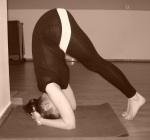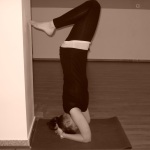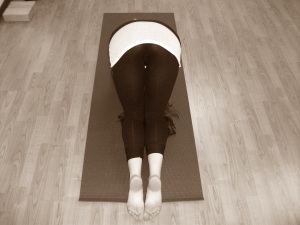Savasana, or as some of my students like to call it, La Siesta, is more than just taking a nap at the end of class – though the occasional snore heard around the Yoga Hall may argue to the contrary.
To the outside observer, it is true that Savasana appears to be an easy pose, or maybe not a pose at all. However, let me clarify, Savasana, when practiced correctly, can be one of the most challenging of postures and one of the most rewarding.
The point of Yoga is to still the mind in order to know the soul. When the chaos of the mind becomes silent we are able to hear and come into tune with who we really are and what we really desire. Imagine your mind like a lake full of ripples. Imagine those ripples disappearing, one by one. Note how clearly you can see to the bottom of a lake once those ripples subside. The same principal applies to the mind.
The calming of these ripples is what each asana and round of pranayama practiced in Yoga prepares both the mind and body for. All that movement, focus and breathing is preparation for a state of silence both inside and outside. The final posture of Savasana is the blissful reward for that preparation; however, if we do not pay attention, the reward can become squandered and lost.
This is why I say Savasana is the most challenging of postures. Yes, even more challenging than perfecting Uttitha Trikonasana, a posture B.K.S Iyenger is quoted as saying can take up to 10 years to accomplish, which means perfecting the more challenging posture of Savasana is a lifelong pursuit.
While in Savasana one should try to let go of the mind while remaining alert. This takes time and lots of practice and this is the detail that is all too often forgotten. Those 15- 30 minutes at the end of each Yoga class gives us precious moments of reflection and peace that in our everyday lives most of us don’t normally get. Consequently, new realizations can come forth from this posture as does a wonderful sense of peace and wholeness. So the question is- How do you perfect a posture that can only be corrected by your internal guru, yourself?
My advice is the following, though I encourage trying out different techniques if you do not find this one useful.
The first trick is to pay attention. Listen carefully to the guided meditation. Allow yourself to feel each body part relax as your teacher guides you into a deeper and more relaxed state. Pay attention to how your body changes in weight, in temperature and let the breath go to wherever tension resides. Let it go with each exhale. If thoughts begin to creep in (and they will) let them come and go. Watch them like a movie. You are the spectator during this posture. Don’t get angry or annoyed with the thoughts. And don’t get sucked into them. Watch and pay attention to how these thoughts, can change the tension in your body. Be curious about it, but don’t get upset with yourself for letting them creep in. They just want to know that they are still important. Let me them know that they are and you’ll get back to them…later. Resisting thoughts will only bring them in stronger. Listen to your breath. Feel it. Watch it. Focusing on the breath will help you exponentially to step outside of your head and into your body. As you do this, feel how you come into contact with something more than your mind, perhaps your soul? Continue to be the curious spectator and observe and enjoy how this act alone will carry you forward into into the blissful peace of meditation.
Happy Savasana!

Om!















